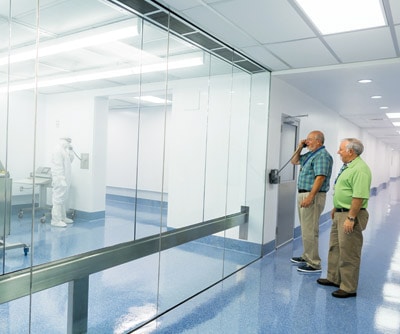cleanroom design
O’Neal can deliver cleanroom designs for classified cleanroom
environments for precise control of temperature, humidity and/or static
electricity, as well as airborne particulates, bioburden, trace chemicals or metals that may be incompatible with a process or product. Our core
competencies in cleanroom design, HVAC, and central utilities support both
custom and modular installations.
O’Neal’s portfolio of projects includes a variety of cleanroom design applications and environmental requirements in diverse industries such as biotech, pharmaceuticals, medical device, vaccines, semiconductors and nanotechnology. Our team has extensive experience designing cleanrooms for cGMP process contamination control, as well as process containment, including highly potent compounds and biohazard applications.
O’Neal’s engineering approach integrates facility programming with mechanical systems design to deliver cost-effective facility solutions that satisfy both process and regulatory requirements. O’Neal also designs closed process systems for segregated processing. As part of our integrated engineering offerings, we can execute a systematic analysis of your operations to find the optimum combination of environmental, equipment, and procedural controls for your application. Bottom line, our cleanroom design approach for manufacturing environments is focused on the facility function to maximize flexibility and provide the best overall solution for our clients. For exceptional environments to support your manufacturing process, you can trust O’Neal to deliver cleanroom design that assures your quality and compliance goals are met.
Facility Programming:
- Facility Layout
- People/Equipment/Material Traffic
- Product Flow through Facilities
- Air Locks & Pass-Throughs
- Gowning Requirements
- Process Closure Analysis
- Process Equipment Loads
- Regulatory Requirements
- Architectural Finishes & MOC
Mechanical Systems:
- Area Classifications
- Air Flow Velocity / Changes per Hour
- Laminarity Requirements
- Temperature & Humidity
- Noise & Vibration Constraints
- Electrostatic Discharge Requirement
- Space Pressurization & Air Balance
- Reliability & Sustainability
- Mechanical HVAC System Selection
